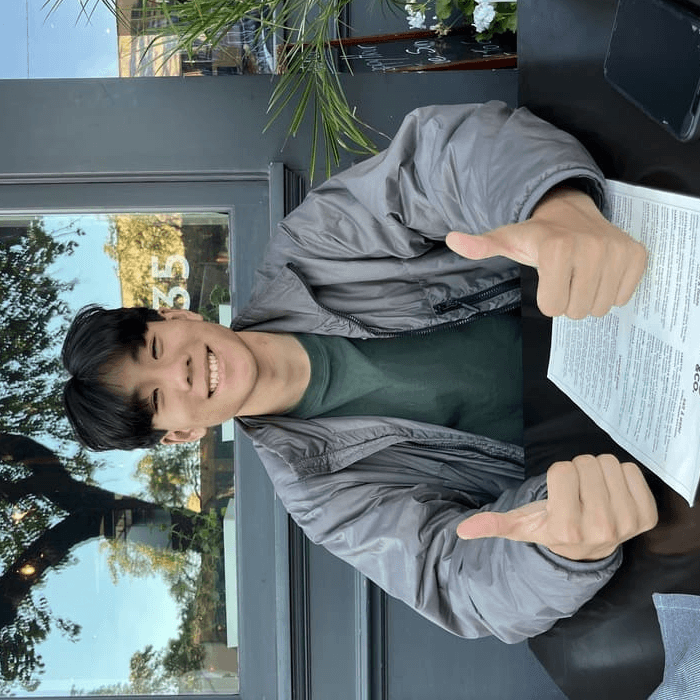< Back
How ChatGPT Summarize Long Text (10 Prompts You Can Use)
Declan Gessel
Aug 19, 2024
Whether you're a high school student tackling reading comprehension for a standardized test or a college student trying to make sense of complex research for a paper, we've all been in a position where we need to extract crucial information from long texts. That's where ChatGPT comes in.
Not only can it help you understand long texts, but it can also quickly summarize long texts for you. This guide will cover how to use ChatGPT for homework, specifically summarizing long texts. We'll also introduce Jotbot’s AI writing assistant and provide 10 prompts you can use to summarize long texts with ChatGPT.
Table of Contents
Limitations and Considerations of ChatGTPT (& a Complementary Alternative!)
Write Smarter With AI Writing Assistant — Start Writing for Free Today
How ChatGPT Works with Long Text Processing

ChatGPT, a sophisticated language model developed by OpenAI, has demonstrated impressive abilities in comprehending and generating human-like text. Its capacity to process information and deliver comprehensive responses has made it an invaluable resource across diverse fields. A noteworthy capability is its potential to effectively summarize lengthy text. Given the overwhelming volume of information available today, this skill is essential for saving users time and effort.
Using sophisticated algorithms and an extensive dataset, ChatGPT can analyze intricate text structures, pinpoint critical details, and condense content into succinct summaries. This process entails dissecting the text into smaller components, grasping the context, and constructing a coherent overview. While promising, the summary's quality can change based on factors like the complexity of the original text and the model's training data.
Limitations of ChatGPT Summarization
Despite its potential, ChatGPT has limitations. For instance, the model may struggle with highly technical or domain-specific content, and oversimplifications or inaccuracies may occur. Additionally, while ChatGPT can generate coherent summaries, they may lack the nuances and depth of a human-written summary.
Related Reading
• Sharly AI
• ChatGPT PDF
• AI PDF Reader
• Hypotenuse AI
• ChatDoc
• PDF AI Summarizer
• Docsumo
• Document Summarizer
• Docalysis
Complexities of Long Text Processing

Information Overload: Too Much of a Good Thing
The digital age has ushered in an era of information abundance. A vast array of textual data is generated daily across various platforms, from social media to academic research papers. This deluge of information presents a significant challenge for individuals seeking to find relevant content. The sheer volume of text can overwhelm human cognitive capacities, making it challenging to identify crucial details amidst a sea of irrelevant information.
Textual Variability: The Many Flavors of Human Language
Human language is inherently complex and multifaceted, exhibiting various variations in style, vocabulary, and syntax. These linguistic nuances pose significant challenges for automated text processing systems. For instance, the same information can be conveyed using different word choices, sentence structures, and grammatical constructions. Additionally, ambiguities, metaphors, and idiomatic expressions can further complicate text interpretation.
Contextual Understanding: No Text is an Island
To accurately extract meaning from text, it is essential to consider the context in which it is presented. This encompasses many factors, including the author's intended meaning, the target audience, and the overall subject matter.
Understanding the context allows for a nuanced interpretation of the text, enabling the identification of implicit information and the resolution of ambiguities. However, capturing the subtleties of context is a complex task that requires sophisticated computational models.
Computational Efficiency: Time is of the Essence
Processing large volumes of text is computationally demanding, requiring efficient algorithms and data structures to handle the task effectively. Balancing computational efficiency with the accuracy of results is a critical challenge. As text datasets grow, algorithms that can process information rapidly while maintaining high levels of precision are needed.
Information Density: Not All Text is Created Equal
Textual content varies significantly in terms of information density. Some documents contain detailed information, while others are more concise and focused. This variation poses challenges for text processing systems, as they must adapt to different levels of information compaction. Moreover, identifying the most relevant information within a dense text can be difficult, requiring effective summarization techniques.
Text Structure: The Organization of Information
Information organization within a document plays a crucial role in text processing. Features such as headings, subheadings, and paragraphs provide structural cues to aid information extraction. However, variations in text structure, such as the use of non-standard formatting or the absence of clear organizational elements, can hinder the processing efficiency.
Domain-Specific Language: The Jargon of the Trade
Many fields of study and industry use specialized terminology and complex sentence structures. For example, legal documents, medical reports, and scientific papers often contain language inaccessible to the general public. Processing domain-specific text requires specialized knowledge and language models trained on relevant data.
Subjectivity and Bias: The Author's Perspective
Human-authored content is inherently subjective, reflecting the author's opinions, beliefs, and perspectives. This subjectivity can introduce biases into the text, influencing the interpretation of information. Text processing systems must be able to identify and mitigate the effects of subjectivity and bias to provide unbiased and accurate results.
Handling Complex Text Structures: Beyond the Linear
Beyond simple linear text, many documents incorporate complex structures such as tables, lists, and figures. Extracting information from these elements requires additional processing steps and algorithms. Moreover, understanding the relationships between different document components is crucial for accurate information extraction.
Ambiguity and Polysemy: The Many Meanings of Language
Natural language is rife with ambiguity, where words or phrases can have multiple meanings depending on the context. Additionally, polysemy, the ability of a word to have multiple related meanings, further complicates text processing. Resolving ambiguities and correctly interpreting polysemous words is essential for accurate information extraction.
Addressing these complexities requires the development of sophisticated algorithms and models capable of understanding the nuances of human language and extracting meaningful information from diverse text formats. While significant progress has been made in recent years, long-text processing remains a challenging area of research and development.
Write more innovatively, not harder, with Jotbot's AI writing assistant. Start writing for free with Jotbot today — sign in with Google and get started in seconds.
How ChatGPT Analyzes Texts

The Shift in Text Processing and Understanding
Large language models have changed how we process and understand text. ChatGPT is the model that has captured almost everyone’s attention, and for good reason. It has elevated our ability to summarize long texts and understand language.
The advanced natural language processing techniques powering ChatGPT allow it to summarize long documents in record time. It can analyze the structures of complex texts, identify key topics and phrases, and generate concise summaries that capture the essence of the original content. This creates new opportunities to improve information management and retrieval across various fields, from business to academia.
Understanding ChatGPT's Summarization Skills
ChatGPT can summarize long documents in a fraction of the time humans can. For example,
researchers can use the AI model to understand academic papers and quickly identify key findings. Instead of reading the whole document, they can ingest the output from ChatGPT and work on their projects.
In the business world, professionals can also leverage the tool to extract pertinent information from lengthy reports and analyses without combing through every section. This capability can save hours and help organizations run more efficiently.
The Challenges of Using ChatGPT for Summarization
Despite the benefits of using ChatGPT for tasks like summarizing long documents, it’s crucial to understand the challenges associated with the tool. The output quality can vary based on the text's complexity, the subject matter's specificity, and the quality of the training data.
The ChatGPT Summarization Process

Preprocessing: Setting the Stage for Summarization
The summarization process begins by transforming raw text into a format suitable for computational analysis. This involves a couple of steps. First, the model must tokenize the text, segmenting it into individual words or subwords. Next, normalization occurs, encompassing tasks like stemming (reducing words to their root form) and lemmatization (converting words to their dictionary form). These processes streamline the text, making it more suitable for subsequent analysis.
Contextual Understanding: Getting the Big Picture
Effective summarization requires a deep comprehension of the text's context. ChatGPT excels in this regard by leveraging its ability to analyze the intricate relationships between words, phrases, and sentences. This contextual awareness is instrumental in identifying the overarching theme and discerning the most pertinent information within the text.
Information Extraction: Identifying the Crucial
To generate a concise and informative summary, ChatGPT must pinpoint the most critical elements within the text. This is achieved through attention mechanisms, which enable the model to focus on specific parts of the input while considering the entire context. ChatGPT extracts the core information necessary for constructing a coherent summary by identifying key phrases, sentences, and paragraphs.
Sentence Generation: Crafting the Summary
Once the essential information has been extracted, ChatGPT generates summary sentences. This involves selecting appropriate vocabulary, adhering to grammatical rules, and constructing syntactically correct sentences, effectively conveying the extracted information. The model's ability to generate fluent and coherent text is a testament to its advanced language capabilities.
Iterative Refinement: Polishing the Output
ChatGPT's summarization process is not a one-time affair. The model often engages in an iterative process of generating and refining summaries. This involves comparing the generated summary to the original text, identifying areas for improvement, and making necessary adjustments. This iterative approach ensures that the final summary is accurate, comprehensive, and aligned with the intent of the original text.
Factors Influencing Summary Quality
While ChatGPT has demonstrated remarkable summarization capabilities, the quality of its output is influenced by several factors. The complexity of the input text, the specific prompts provided, and the nature of the model's training data all play a role in determining the effectiveness of the generated summary. Additionally, the summary's length and desired level of detail can impact the outcome.
By understanding these intricate processes, we can appreciate the sophistication of ChatGPT's summarization abilities. While ChatGPT is a powerful tool, human judgment remains crucial for evaluating the quality and accuracy of generated summaries.
Start Writing For Free With Jotbot
Jotbot is your document assistant. Jotbot does AI note-taking, AI video summarizing, and AI citation/source finder; it writes AI outlines for essays, and even writes entire essays with Jotbot’s AI essay writer.
Join 500,000+ writers, students, teams, and researchers worldwide to write more, write better, and write faster with Jotbot's AI writing assistant. Write more intelligently, not harder, with Jotbot's AI writing assistant. Start writing for free with Jotbot today — sign in with Google and get started in seconds.
Related Reading
• Best PDF Summarizer
• Can You Upload Files to ChatGPT
• Upload PDF to ChatGPT
• Zotero GPT
• Paper Summary AI
• Ask Your PDF ChatGPT Plugin
• Can AI Summarize an Article
• AI That Reads PDF and Answers Questions
• ChatGPT File Uploader
• Chat with Documents
10 Prompts to Summarize Long Text with ChatGPT

General Summarization: Get to the Point Fast!
"Summarize the following text, highlighting the main arguments and supporting evidence." This prompt helps you get a quick overview of the text without too much detail. You can use this for any kind of text, including articles, reports, essays, and more.
Specified Length: Get Me an Executive Summary!
"Provide a 300-word executive summary of this report, emphasizing the key recommendations." This prompt instructs ChatGPT to summarize the text using a specific word count. This can help you get a focused text summary that meets your needs.
Key Points: Identify the Most Critical Information
"Identify and summarize the five most critical points discussed in this article." This prompt is helpful when you need to understand the critical points within a text. Instead of getting a general summary, this will help you identify and focus on the most vital information.
Target Audience: Tailor the Summary to a Specific Reader
"Summarize this complex scientific paper for a high school student audience." This prompt helps you generate a summary appropriate for a specific audience. In this case, the target reader may struggle with the jargon in a scientific paper. ChatGPT can help you translate the information so it’s easier for a layperson to understand.
Comparative Analysis: Summarize and Contrast Different Ideas
"Compare and contrast the two proposed solutions presented in the text, outlining their strengths and weaknesses." This prompt helps you summarize two (or more) ideas from a text while identifying similarities and differences in the information. This can help you get organized before writing your comparative analysis.
Perspective Shift: Get a New Angle on the Information
"Summarize this news article from the perspective of a climate change activist." This prompt helps you understand how different audiences view a piece of content. You can use the summary to get insight into alternative perspectives in your writing.
Data Extraction: Pull Out the Numbers
"Extract the key statistical data from this report and present it in a tabular format." This prompt helps you identify and summarize quantitative data within a text. Instead of generating a paragraph summary, you’ll get a focused overview of the statistical information that may be critical to your work.
Outline Creation: Organize the Information
"Generate a detailed outline of this book, including chapter summaries and main arguments." This prompt helps you break down a text into manageable parts. This can be especially useful for long or complex texts. Instead of reading the entire book to understand the main arguments, you can quickly get an overview to help you write or prepare for a class discussion.
Question Generation: Get Critical Thinking Questions
"Create five thought-provoking questions based on the content of this article." This prompt helps you summarize a text and generate critical thinking questions that can be used to guide a class discussion or help you prepare for writing an assignment.
Translation and Summarization: Get Two for the Price of One
"Translate the following text into Spanish and summarize the translated version." This prompt is helpful for language learners. It helps you summarize a text while also changing the language. This can help improve comprehension and identify critical points in a summary before moving on to writing your summary in the new language.
Limitations and Considerations of ChatGTPT (& a Complementary Alternative!)

Data Bias: A Fundamental Challenge
ChatGPT's training data may contain biases, which can be reflected in the generated summaries. It is crucial to be aware of potential biases and interpret the output accordingly.
ChatGPT's training data comes from various online and offline sources. While this dataset is extensive and diverse, it may contain inherent biases in perspective and representation reflected in the generated summaries. Summaries produced by ChatGPT may unintentionally underrepresent or overrepresent certain viewpoints, cultures, or groups, so it’s essential to interpret the output with caution.
Factuality: Always Verify Summaries
While ChatGPT can provide informative summaries, it is not infallible. Verifying information from sources is essential to ensure accuracy.
ChatGPT is a powerful tool for summarizing long text but doesn’t always produce accurate outputs. Summaries generated by ChatGPT can contain factual errors or provide misleading information. Even if the summary appears reasonable, it’s crucial to cross-reference the information with the source to ensure it is correct.
Complexity and Nuance: Oversimplification is Possible
Highly complex or nuanced text may pose challenges for ChatGPT, resulting in
oversimplification or missed details.
ChatGPT is a machine learning model that relies on patterns in existing data to make predictions about text. For this reason, it can struggle to summarize specific topics effectively, particularly those highly technical or complex. In these cases, the generated summaries may be oversimplified or miss critical nuances necessary to understand the text correctly.
Subjectivity: Summary Interpretations Vary
Summarization is inherently subjective, and individuals may produce varying summaries of the exact text. ChatGPT's summaries may not always align with human interpretations.
ChatGPT can produce summaries of long text quickly and at scale, but it’s essential to remember that it isn’t perfect. Summarization is inherently subjective, and different individuals will produce varying summaries of the exact text. ChatGPT is no different; its outputs may not always align with your text interpretation.
Jotbot's Complementary Role in Addressing Limitations
Jotbot, as a personal document assistant, offers several features that can complement ChatGPT's summarization capabilities and address some of its limitations.
Combining ChatGPT's and Jotbot's strengths allows users to create more accurate, comprehensive, and reliable summaries of long text documents.
Write Smarter With AI Writing Assistant — Start Writing for Free Today
Jotbot is your document assistant. Jotbot does AI note-taking, AI video summarizing, and AI citation/source finder; it writes AI outlines for essays and even writes entire essays with Jotbot’s AI essay writer.
Join 500,000+ writers, students, teams, and researchers worldwide to write more, write better, and write faster with Jotbot's AI writing assistant. Write more innovatively, not harder, with Jotbot's AI writing assistant. Start writing for free with Jotbot today — sign in with Google and get started in seconds.
Related Reading
• How to Upload Files to ChatGPT-4
• DocLime
• PDF.ai Chrome Extension
• Claude PDF
• AI to Extract Data from PDF
• AI PDF vs AskYourPDF
• ChatDoc vs ChatPDF
• ChatPDF Alternatives
• HiPDF
• ChatGPT Homework
• Student GPT
• How to Use ChatGPT for School
• ChatGPT Homework Help
Write more, better, faster.
Your personal AI document assistant












